- Home
- Rabindranath Tagore
The Lover of God Page 6
The Lover of God Read online
Page 6
5. Rabindranath Tagore, Gitanjali, with an introduction by W. B. Yeats (London & New York: The Macmillan Company, 1913).
6. His own statements about religion can be found in two books of essays, delivered to Harvard in 1913 and Cambridge in 1930; the former a somewhat rambling, poetic view of the formless absolute found in the Upaniṣads, as he saw it applied to his world; the latter a more cogent vision of the relationship of religion and aesthetics. See Rabindranath Tagore, Sādhanā: The Realisation of Life (New York: The Macmillan Company, 1913), and idem, The Religion of Man, The Hibbert Lectures for 1930 (London: George Allen & Unwin, 1931).
7. For a wonderfully provocative, poetic reverie on the nature of eros as glukupikron, see Anne Carson, Eros the Bittersweet: An Essay (Princeton: Princeton University Press, 1986).
8. Rūpa Gosvāmī, Bhaktirasāmṛtasindhu, ed. with Bengali translation by Haridāsa Dāsa, with the commentaries Durgasaṃgamanī-ṭīkā of Jīva Gosvāmī, Artharatnālpadīpikā of Mukundadāsa Gosvāmī, and Bhaktisārapradarśiṇīṭīkā of Viśvanātha Cakravartī, 3d edition (Mathurā: Haribola Kuṭīra from Śri Kṛṣṇajanmasthāna, 495 G.A. [1981]), pp. 359–392. For a detailed summary and analysis of the devotionalism proposed by Rūpa, see S. K. De, History of the Vaiṣṇava Faith and Movement in Bengal (Calcutta: Firma KLM, 1961), pp. 166–224.
9. The Sanskrit terms are śānta (awe and respect), dāsya (servitude), sakhya (companionship), vātsalya (parental love), and śṛṇgāra (erotic love).
10. Rabīndranāth Ṭhākura, Rabīndra Racanāvalī, 36 vols. (Calcutta: Viśvabhāratī Granthālaya, 1346 B.S. [1939]), vol. 2, pp. 1–27.
11. The poems have been published with notes regarding changes in a different edition, in Rabīndranāth Ṭhākurā, Bhānusiṃha Ṭhākurer Padāvalī (Calcutta: Viśvabhāratī Granthabibhāg, 1376 B.S. [1969]). The publication history can be found there, on pp. 107–108.
12. Prabhat Mukherji, Rābīndrajīvanī o Rabīndrasāhitya Praveśika, vol. 1, pp. 68–71.
13. The previously cited author Prabhat Mukherji told me in an interview at Santiniketan, on 8 August 1976, that this alleged thesis was ostensibly submitted to a German university, but an exhaustive search of all theses submitted to all major universities in Germany at that time produced no corroboration.
14. Rabindranath Tagore, My Reminiscences, trans. Surendranath Tagore (London: The Macmillan Company, 1917), p. 138.
15. Trans. Dutta and Robinson in Rabindranath Tagore: The Myriad-Minded Man, p. 367; the original can be found in Rabīndra Racanāvalī, vol. 26, pp. 49–50.
Appendix: The Life of Bhānusiṃha Ṭhākura16
It is impossible to determine in which precise years of the Christian era what idiots or sages were born or died to this world, and from this it can be concluded definitively that the land of India has no real history. On this matter the learned Hutchinson Saheb, in his seminal treatise, which has been grounded in the most enlightening research—and from which I quote—has opined, “If there is no factual history, we cannot know the first thing concerning times past.”17
There has been, of course, no history at all in our country, and if there is no history, the real measure of the country cannot be ascertained. Lamentably nothing can be definitively determined about that crown-jewel of Vaiṣṇavas, the most ancient of poets, Bhānusiṃha Ṭhākura. This has been no minor source of misery for some time, so we have endeavored to wipe clean this smudge on the vanity-mirror of the Land of the Bhāratas. And it is our sincere hope that we have been successful in this. All that we have determined is the unexpurgated truth, facts about which there can be no doubt.
First we must calculate the time and date of Bhānusiṃha Ṭhākura’s birth. Some say he lived before Vidyāpati, others say later. Well if he came before, just how much before? And if he came later, how much later? There are several authoritative books from which we can glean much helpful information. And so,
First. There are the four Vedas: Ṛk, Yajus, Sāma, and Atharva. Whether the Vedas are really three or four has not even been fully determined; well, we have firmly fixed it, but many others have not. It cannot be doubted that there are at least three among the Vedas. In the Ṛg Veda is written: “ṛṣaya strayī vedā viduḥ ṛco yajuṃṣi sāmāni.” Nor is it not unknown by many what is written in the Śatapatha Brāhmaṇa of the fourth. Those who have the leisure to pore over the sūtras of the Vedas will discover therein that the Atharva Veda has no beginning. And with that in mind, the evidence suggests that the books of the Veda number none other than three. Now let us look carefully at the evidence pertaining to Bhānusiṃha that can be divined from these three Vedas. In the Veda one finds chanda (metrics and prosody), one finds mantra (magical utterances), one finds brāhmaṇa (sacred knowledge), one finds sūtra (pithy philosophical statements), but of Bhānusiṃha nothing whatsoever is stated.18 However, in the saṃhitā sections of the Vedas one finds stories of such deities as Indra, Varuṇa, Marut, Agni, Rudra, Rabi, etc., and yet by some inexplicable ignorance there are no references whatsoever to Bhānusiṃha in the historical writings.19
In the Śrīmad Bhāgavata and Viṣṇu Purāṇa, one finds stories of the royal line of Nanda. And there we find written the story that Mahāpadma Nandī would bring into the world eight sons, starting with Sumālya, so, too, we find the tales of the Brahmin Kauṭilya; yet in that same place we catch not the tiniest glimpse of reference to Bhānusiṃha.20 Should a bold and confident writer assert that “Yes, one can find references to Bhānusiṃha there,” and proceed to furnish incontrovertible proof, then he will have earned our and all of India’s deepest gratitude and thanks.
An article on Bhoja was brought to our attention, and it contained an extended description of Bhoja’s role as king, Lord of Dhara City. In it we found the following names of pandits: Kālidāsa, Karpūra, Kalīṅga, Kokila, and Śrīcandra. Even the names of Mucakunda, Mayūra, and Dāmodara could be located there, but the name of Bhānusiṃha was nowhere to be told.21 Compare this quote from the Viśvaguṇādarśa:
māghaścoro mayūro murāri purasaro bhāravīḥ sāravidyaḥ /
śrīharṣaḥ kālidāsaḥ kaviratha bhavabhūtyādayo bhojarājaḥ //
Clearly Bhānusiṃha’s name is not there.22
Thinking that Bhānusiṃha’s name might be mentioned in Vikramāditya’s Navaratna, we searched at length and saw:
dhanvantariḥ kṣapaṇakomara siṃha śaṅkurvetāla bhaṭṭa
ghaṭakarpara kālidāsāḥ /
khyātā varāha mihiro nṛpateḥ sabhāyāṃ ratnāni vai
vararucirṇava vikramasya //
Alas, Bhānusiṃha’s name was not found there, either.23 Still, some overly imaginative individuals suspect that Kālidāsa and Bhānusiṃha will turn out to be one and the same. This wild speculation can be neither rejected nor ignored, because the two poets so closely resemble each other in their genius and in the power of their poetic craft.
Finally we found no mention of Bhānusiṃha anywhere, even though we have diligently investigated Batriśasiṃhāsana (The Thirty-two Stories in Praise of the Lion-Throned Vikramaditya), Vetālapãciśa (Tales of the Twenty-five Vampires), Tulsidāsa’s Rāmāyaṇa, The Arabian Nights, and Suśilāra Upākhyāna (The Story of the Good-Natured Boy). So, let no one find fault with the nature of our inquiry—the fault lies with the books alone.
There are four prevailing views concerning the date of Bhānusiṃha’s birth. The revered Pāñckari Bābu says that Bhānusiṃha’s birth was prior to A.D. 451. The most distinguished and learned Sanātana Bābu says it was some time after 1689 of the Christian era. Nitāicaraṇa Bābu, chief of pandits revered throughout the universe, argues that Bhānusiṃha took birth some time between A.D. 1104 and 1799. And the great scholar De, recipient of the special favor of the Goddess of Learning herself, asserts that Bhānusiṃha was born either before the year A.D. 819 or after A.D. 1639, and about that he has no doubt whatsoever. In addition, there is a rumor spread among several of our dear
friends and relatives to the effect that Bhānusiṃha, that “Sun Lion,” illumined this world with his effulgence by taking birth in the Christian year of 1861. Our more intelligent readers will not have to be told just how untenable this proposition is. Be that as it may, we are promoting this as Bhānusiṃha’s birth date of record. The most intellectually astute and discriminating readers will harbor no doubts regarding the incontrovertible nature of its truth.
In the eleventh chapter of the Nīla Purāṇa, Vaitasa Muni has been called Bhānava.24 Thus can it be seen that he is born of the lineage of Bhānu. So, he came several generations after Bhānu, though it is difficult to pinpoint this precisely. Rāma is said to be Rāghava and Rāma was three generations after Raghu, so let us assume that Vaitasa was Bhānu’s fourth generation. Calculating twenty years for each generation, then Vaitasa Muni’s birthday should come more or less eighty years after the birth of Bhānusiṃha. Those who have read the Rājātaraṅginī know well that Vaitasa was a man of the year A.D. 518,25 from which we can ascertain that Bhānusiṃha’s birth was in the Christian year of 438. Yet were one to follow the evidence proffered by his use of language, Bhānusiṃha would be projected as even more ancient.
It is a common knowledge that the longer a language is spoken by a people, the more abbreviated it becomes. From the older Bengali “gaman karilām” comes “gelum.” From “bhrātṛjāyā” comes “bhāj,” from “khullatāt,” “khuṛo.” Can one find anywhere an example of longer words deriving from shorter? Therefore, Bhānusiṃha’s “pirīti” is assuredly older than the word “prīti,” and “tikhinī” older the “tīkṣna.” In Ṛg Veda 18 can be seen “tīkṣnāni sāyakāni,” and everyone knows that the Ṛg Veda was composed before 4000 B.C. Now it takes a language about two thousand years to become ancient and change, so from this we can definitively conclude that Bhānusiṃha was born at least six thousand years before the Christian era. Therefore it has been proved beyond all doubt that Bhānusiṃha took birth on or about A.D. 438 or 6000 B.C. If anyone can refute this, we shall regard them as our dearest friend, for our goal is nothing other than to ascertain the truth, and toward that we have endeavored from the very opening of this essay through to its end.
There are other details of Bhānusiṃha’s life that we have fixed, and so, if we can determine the place of his birth in the same fashion and degree of confidence, we shall rest easy. There are, of course, many different opinions on this matter. That great heel of respectability Sanātana Bābu says one thing, while the great devourer of things devotional, Rūpanārāyaṇa Bābu, says quite another. There is absolutely no need whatsoever to quote them here, because their opinions are untrustworthy, if not contemptible. And from what they have written it is clear that both authors have grown tails, hooves, and ears of some uncommon length. For those who have espoused their brand of history, let them first submit it to the standards of a proper school, then may they have the courage to counter my claims. I have publicly proclaimed, and without hesitation, that I bear not the slightest bit of malice toward those two writers, and should anyone refute me, I shan’t be angry, but truly delighted, for I have fixed my vision on the general weal. And it is for the sake of that noble truth alone that I desire quite simply that their writings be burned by the caṇḍālas, the polluted handlers of corpses, and that their ashes be hurled into the waters of perdition, and the two authors be sealed in earthen pots and follow suit.
A stone slab has been found down in an old well at Trinkamalī on the island of Sri Lanka. And on this stone were located the first and last letters of Bhānusiṃha’s name: a bha and a ha. The rest of the letters have been completely obliterated. Some argue that the ha is really the conjunct kṣna, while others say ñjha, but it is certainly a ha. Still some claim that the bha is really rcca, and another says klai, but if they were to consider it seriously, they would realize that there is no way for the above-mentioned characters to appear in the word bhānusiṃha. Therefore, we can conclude, Bhānusiṃha used to live in Trinkamalī; although it is still open to debate whether or not it was within the well.
And there is another pressing matter.
An image of the sun god, Sūrya, of which Bhānu is an alternate form, has been unearthed on a mountain in Nepal in an area near Katmandu; although an extensive search of the adjacent region produced no similar image of a siṃha or lion. During the time of occupation by the vile and foreign Muslims, so many of our books, so much of our history, so many temples, were indiscriminately destroyed, and so it is entirely possible that during this same time at the order of Aurangzeb this image of Siṃha the Lion may have been plundered. But recently in Peshawar, a farmer plowing his fields unearthed a carved head of Siṃha the Lion, and it was clear that this was the remaining section of the Nepalese Bhānu image. Nevertheless, its real meaning is of no great import, but from it we can deduce—in fact it is wholly probable and comes as no surprise—that Bhānusiṃha made his home in Nepal. But only the reader can judge whether he used to traipse back and forth from Nepal to Peshawar for work. And it wouldn’t be at all surprising that he would go to the well in Trinkamalī from time to time, in order to bathe. But with respect to Bhānusiṃha’s homeland, it would seem that the arguments of Aprakāśacandra Bābu, he of unerring intellect and hairsplitting acumen, are little more than the ravings of lunacy. He has publicly revealed that one side of a manuscript written in Bhānusiṃha’s own hand bears the name of the city of Calcutta. The veracity of this we certainly do not accept. We are clearly able to prove that in the matter of Bhānusiṃha’s reputed homeland, nothing but confusion has reigned. Bhānusiṃha has written unmistakably, “I reside in Calcutta” (others might say “I reside in Calcutta under a banyan tree”). But if this be true, has anyone found in Calcutta’s many wells a similar stone slab containing equivalent irrefutable proof? According to the rules that govern language, it is entirely feasible for the word “Calcutta” to be written in the Apabhraṃśa of either Katmandu or Trinkamalī. And with that we can conclude that it was Bhānusiṃha himself who was confused regarding the precise whereabouts of his own dwelling.
Little about the life of Bhānusiṃha is known without caveat. Perhaps some other opinionated writers are able to divine it, but this writer humbly submits that he is totally ignorant on the matter. And about his vocation, some have figured that he was a woodcutter with a small shop, while others claim he was a priest, a pūjārī, of the Lord of the Universe, God.
About Bhānusiṃha’s poetry, however, I cannot say enough. It is material stolen from Mother Sarasvatī, the Goddess of Wisdom herself. It is rumored that this poetry used to reside in heaven, hidden in Sarasvatī’s own stringed vīṇā. Once when it came within the range of Viṣṇu’s ear, he realized that a second hearing would melt his heart beyond recovery, and so, fearing that, the personal attendants of Lakṣmī, the Goddess of Prosperity, stole it away and spirited it down to the world of mortality, where it was vouchsafed in Bhānusiṃha’s brilliant mind. Many have said that his poetry is written in a fashion after Vidyāpati, but that only elicits laughter. No one has tried to discover if he does or doesn’t have anything in common with Vidyāpati.
And with that, all the particulars of Bhānusiṃha’s life that can be, have been irrefutably ascertained. Then again, this Bhānusiṃha just may not even be a Vaiṣṇava poet, but who can tell? Whether he is or isn’t ultimately is a trifling matter—and that more than any other issue has been determined to be the bona fide truth.
Nabajīvana (Śrāvana, 1291 B.S. [1884])
16. In year 1291 of the Bengali Era (B.S.)—or A.D. 1884—a short fictional biography of the now-infamous poet Bhānusiṃha appeared in the journal Navajīvana. Rabindranath was, of course, the author of the putative biography, which really makes it a humorous exercise in fictional autobiography. In keeping with his general disdain of the English education system, his biography was a parody of Western scholarship. This biography appeared replete with fictional footnotes in bad form, appropriat
ely convoluted in their disclaimers, filled with specious references to exaggerated German titles, and even a spoof on the American Indian (not to be confused with the Indian Indian), whose footnoted reference—The Grammar of the Red Indian Tchouk-Tchouk-Hmhm-Hmhm Language—when pronounced in Bengali sounds the telltale clucking tongue and head-wagging hum of one who disapproves of something, or, with a slight change of intonation, the tsk of recognition by one who knows one has been had. The exaggerated and overly pedantic style has been preserved in the translation.
17. Memoires of Cattermob Cruikshank Hutchinson, vol. V, P. 1058. If there are any mistakes in spelling or orthography of the Englesh, the readers will understand that they are the fault of the printer. During the one and one-half years I studied Englesh with Bhabānī Master, I was not allowed to read any Bengali, so these mistakes will have sprouted of their own accord like so many thorni bushes.
18. See English Translation of Hitopadesha by H. M. Dibdin, Vol. 3, Page 551.
19. Some exceptionally learned individuals have cast doubts about this connection, for among the various ṭhākuras (deities) mentioned, such as Indra and so forth, Rabi is understood to be an appropriate pseudonym for Bhānu, yet this is deemed highly unacceptable.
20. Vide Pictorial Handbook of Modern Geography. Vol. 1, Page 139.
21. See Hon-chang-ching. By kong-fu.
22. Sāhanāmā, second chapter.
23. Peterhoff’s Chromkroptologisheder Unterlutungeln.
24. See The Grammar of the Red Indian Tchouk-Tchouk-Hmhm-Hmhm Language. Conjongation of Verbs. Vol. 3. Page 999.
25. History of the Art of Embroidery and Crewel Work. Appendix.

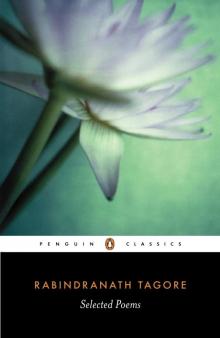 Selected Poems
Selected Poems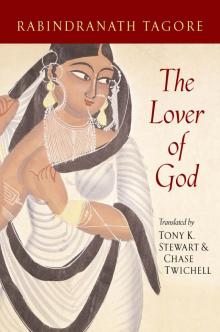 The Lover of God
The Lover of God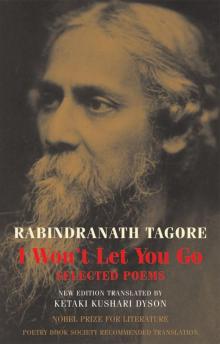 I Won't Let You Go: Selected Poems
I Won't Let You Go: Selected Poems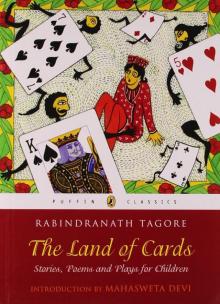 The Land of Cards: Stories, Poems, and Plays for Children
The Land of Cards: Stories, Poems, and Plays for Children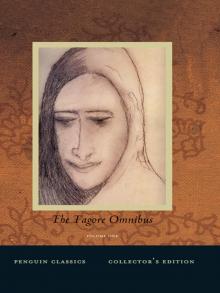 The Tagore Omnibus, Volume One
The Tagore Omnibus, Volume One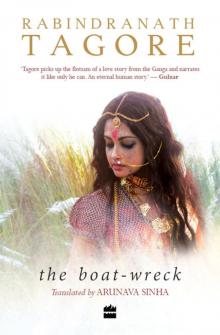 The Boat-wreck
The Boat-wreck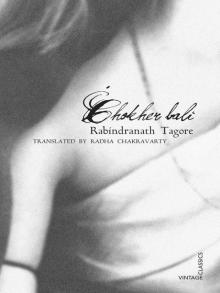 Chokher Bali
Chokher Bali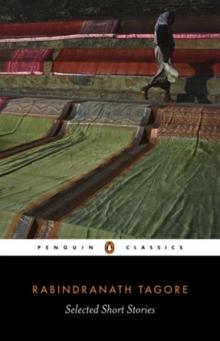 Selected Short Stories
Selected Short Stories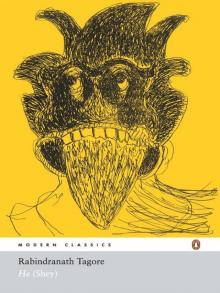 He (Shey)
He (Shey)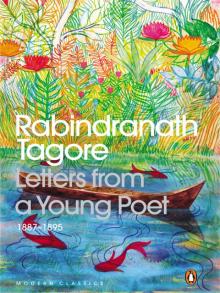 Letters From a Young Poet 1887 1895
Letters From a Young Poet 1887 1895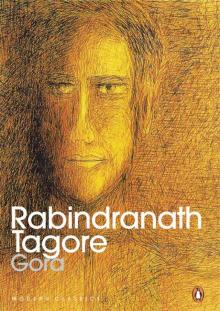 Gora
Gora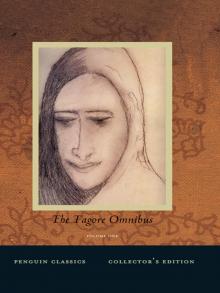 Tagore Omnibus, Volume 1
Tagore Omnibus, Volume 1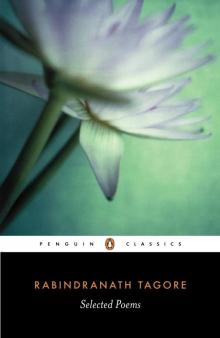 Selected Poems (Tagore, Rabindranath)
Selected Poems (Tagore, Rabindranath)